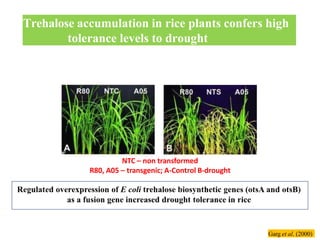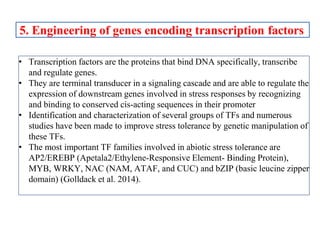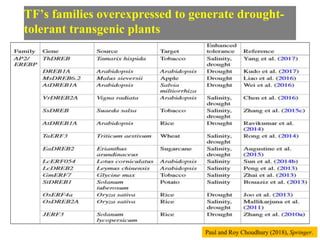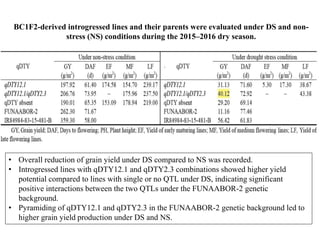Genetic engineering can be used to develop drought tolerant crops. Approaches include engineering genes for organic osmolytes like glycine betaine, trehalose, proline, and mannitol. Genes encoding regulatory enzymes and LEA proteins can also be engineered for drought tolerance. Transgenic crops overexpressing antioxidant enzymes or transcription factors involved in the plant stress response have shown enhanced drought tolerance. Commercially available drought tolerant crops include Monsanto's DroughtGard maize which expresses a cold shock protein from bacteria.














































